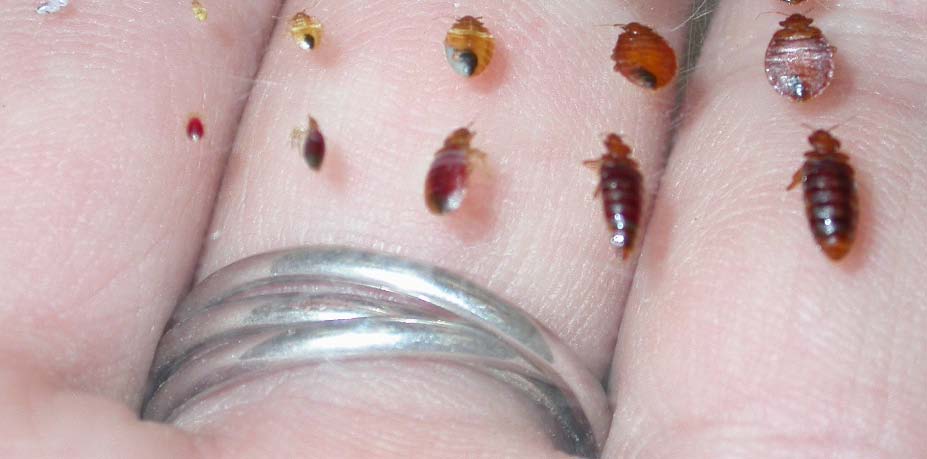How To Identify Bed Bugs In Photos? Expert Tips

Identifying bed bugs in photos can be a challenging task, especially for those without extensive experience in pest control or entomology. However, with the right guidance and knowledge, it’s possible to accurately identify these pests in images. In this comprehensive guide, we’ll provide expert tips on how to identify bed bugs in photos, along with a detailed overview of their biology, behavior, and the importance of accurate identification.
Understanding Bed Bug Biology and Behavior
Before diving into the identification process, it’s essential to understand the biology and behavior of bed bugs. Bed bugs (Cimex lectularius) are small, flat, parasitic insects that feed on the blood of humans and other warm-blooded animals. They are approximately 4-5 millimeters long, oval in shape, and have a reddish-brown color. Bed bugs are notorious for their ability to hide in tiny crevices and cracks, making them difficult to detect.
Bed bugs undergo a process called “incomplete metamorphosis,” which consists of three stages: egg, nymph, and adult. The eggs are white, about 1 millimeter long, and are often laid in cracks and crevices. The nymphs go through five instars, shedding their skin after each stage, before reaching adulthood. Adult bed bugs can live for several months without feeding, making them a persistent pest.
Importance of Accurate Identification
Accurate identification of bed bugs is crucial for effective pest control and management. Misidentification can lead to delayed or inappropriate treatment, allowing infestations to spread and become more severe. Moreover, incorrect identification can also lead to unnecessary treatment costs and potential harm to humans and the environment.
Expert Tips for Identifying Bed Bugs in Photos
Look for the distinctive shape and size: Bed bugs are oval and flat, approximately 4-5 millimeters long. In photos, look for insects that match this description. Be aware that the size might be distorted depending on the photo’s resolution and the insect’s position.
Identify the color: Adult bed bugs are reddish-brown, while nymphs are lighter, often almost translucent. Eggs are white. However, the color in photos can be affected by the lighting conditions and the quality of the image.
Check for distinctive features: Bed bugs have a distinctive head shape and antennae. The antennae are relatively short and have a distinctive segmentation. However, these features might be hard to distinguish in low-resolution images.
Look for the presence of shed skins: Bed bugs molt five times as they grow from nymphs to adults, leaving behind shed skins. These can be found near the areas where the bed bugs hide. Shed skins are often lighter in color and more translucent than the actual insect.
Examine the surroundings: Bed bugs are often found in mattresses, box springs, bed frames, and other areas near sleeping or resting individuals. If the photo shows an insect in one of these environments, it could be a strong indicator that it’s a bed bug.
Consider the aggregation: Bed bugs often aggregate in certain areas, especially when they are not disturbed. If a photo shows multiple insects clustered together, it might indicate a bed bug infestation.
Analyze the body parts: Bed bugs have six legs, and they do not have wings. If an image shows an insect with these characteristics, it could be a bed bug.
Be cautious of similar insects: There are several insects that can be mistaken for bed bugs, such as carpet beetles, book lice, and spider beetles. Carpet beetles, for example, are often smaller and more rounded than bed bugs. Book lice are typically smaller and have a more elongated body shape. Spider beetles have a distinctive, spider-like appearance.
Seek professional opinion: If you’re still unsure after examining the photo and considering these tips, it’s best to consult a pest control professional. They can provide a definitive identification and recommend the appropriate course of action.
Enhancing Photo Quality for Better Identification
To improve the chances of accurately identifying bed bugs in photos, it’s essential to enhance the image quality. Here are some tips:
- Use high-resolution images: High-resolution images provide more detail, making it easier to identify the insect’s features.
- Adjust the lighting: Proper lighting can help to reduce shadows and reflections, making it easier to see the insect’s characteristics.
- Use a macro lens: A macro lens can provide a close-up view of the insect, allowing for more detailed examination.
- Use image editing software: Image editing software can help to enhance the image quality, adjust the brightness and contrast, and remove noise.
FAQ Section
What are the most common places to find bed bugs?
+Bed bugs are most commonly found in mattresses, box springs, bed frames, and other areas near sleeping or resting individuals. They can also be found in cracks and crevices, behind wallpaper, and in other hidden areas.
How can I prevent bed bug infestations?
+To prevent bed bug infestations, it's essential to be vigilant when traveling, inspect second-hand items carefully before bringing them into your home, and maintain a clean and clutter-free environment.
What are the signs of a bed bug infestation?
+Signs of a bed bug infestation include live bed bugs, shed skins, blood spots, and a sweet, musty odor. If you suspect a bed bug infestation, it's essential to contact a pest control professional for proper identification and treatment.
In conclusion, identifying bed bugs in photos requires a combination of knowledge, experience, and attention to detail. By understanding the biology and behavior of bed bugs, being aware of the importance of accurate identification, and following the expert tips outlined in this guide, you can improve your chances of accurately identifying these pests in images. Remember to always consult a pest control professional if you’re unsure, as they can provide a definitive identification and recommend the appropriate course of action.

